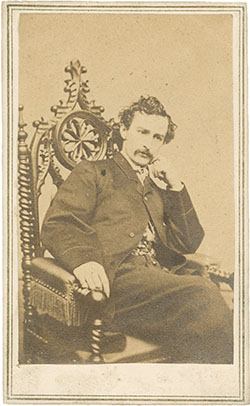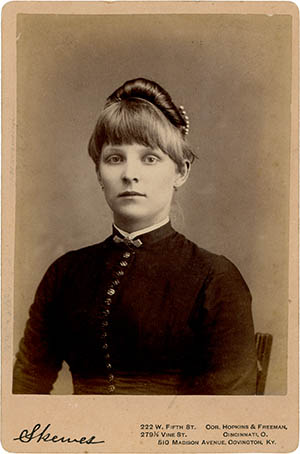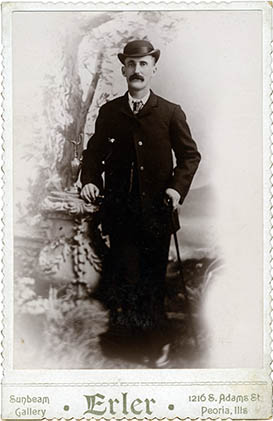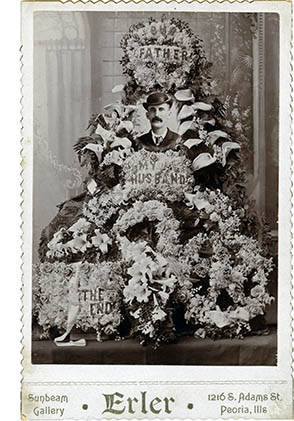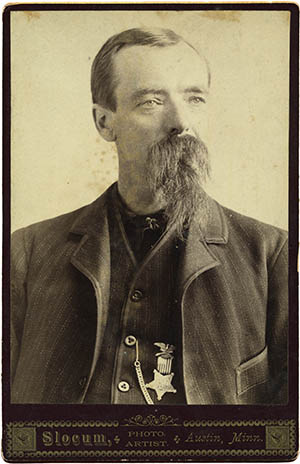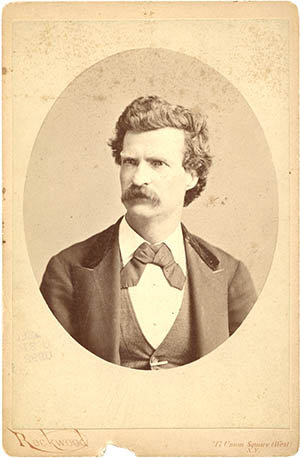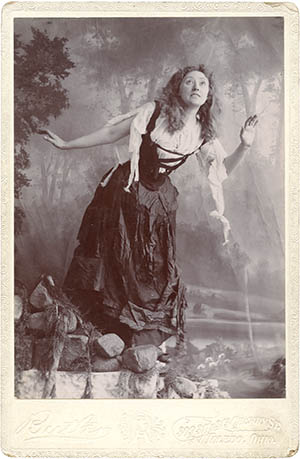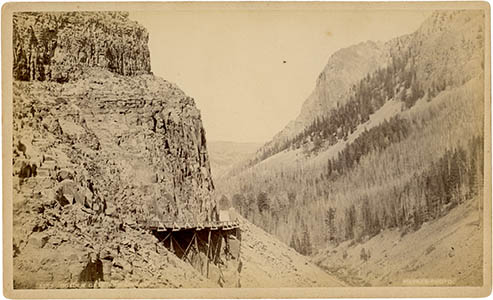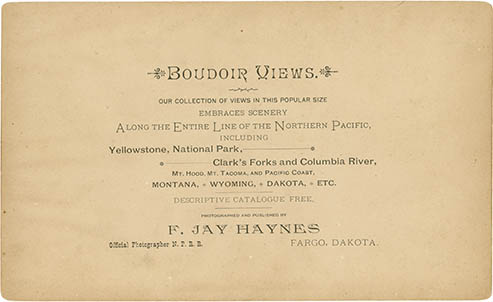This is a detail of a commercially-produced cabinet card of the actor Edwin Thomas Booth (13 Nov 1833 – 7 Jun 1893) in his role as Hamlet. Booth began his stage career playing opposite his father, the the mad tragedian Junius Brutus Booth, and by the 1860s he was performing versions of Hamlet, Othello and the Merchant of Venice that were “of unexampled magnificence and melancholy refinement.” At the peak of his career, on 15 April 1865, his younger brother John Wilkes, himself an actor as well as a Confederate sympathizer, gained some notoriety by assassinating President Lincoln.1
CDV, John Wilkes Booth
After the tragic events Edwin intended to retire from the stage but found that his audience welcomed him back, despite the actions of his brother. For the rest of his life he performed Shakespeare both in the US and Europe.
In 1863 the London studio of Windsor & Bridge announced a process where two negatives could be shot on a single wet-plate. These photos, four times the size of the CDV, could be displayed on top of the parlor cabinet in an appropriately appointed Victorian home and easily viewed from across the room, hence their name – the cabinet card.
Early cabinet card, ca.1870s
The cabinet card was introduced to America in 1866 and steadily gained in popularity. By the 1880s they surpassed the CDV as the preferred format for portraiture. The larger images showed more detail but also showed more imperfections (like aunt Violet’s hairy mole) and were almost single-handedly responsable for the rise of photographic negative retouching.
A photo of a photo as a memento mori
The cabinets, like the CDVs, were well-suited to mass-produced images of actors and actresses (like the example of Edwin Booth above), politicians and royalty or the otherwise famous and nearly famous.
Mark Twain
Bride Kavanaugh in Glen-da-Laugh
In the 1880s and 1890s even larger card formats, including the Boudoir card (5½ × 8½") and the Imperial card (7 × 10") were introduced:
By the turn of the century the CDV and cabinet portraits were largely replaced by the studio silver gelatin print and the amateur snapshot. Celebrity images were eventually replaced by newspaper halftones or magazine chromolithographs.
1. There are enough books about the Booth family and the assassination of Lincoln to fill a small medium-sized library. Here are two more recent ones:
Giblin, James. Good Brother, Bad Brother: the Story of Edwin Booth and John Wilkes Booth. New York: Clarion Books, 2005
(WorldCat) and
Pitch, Anthony. They Have Killed Papa Dead!: The Road to Ford's Theatre, Abraham Lincoln’s Murder, and the Rage for Vengeance. Hanover, New Hampshire: Steerforth, 2009
(WorldCat).
17 Dec 2014 ‧ Photography

